Past Projects
Neuropole
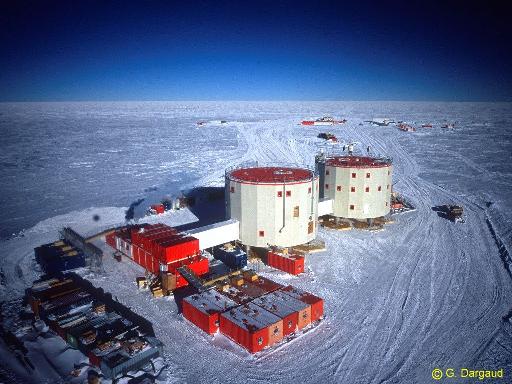 This project will give an insight on the sleep-wake regulation in both summer and winter periods, on the positive effect of exercise on sleep quality, cognitive performance and against circadian desynchronization, on the measure of sleep-wake regulation through gene expression analysis in blood and at a molecular level.
This project will give an insight on the sleep-wake regulation in both summer and winter periods, on the positive effect of exercise on sleep quality, cognitive performance and against circadian desynchronization, on the measure of sleep-wake regulation through gene expression analysis in blood and at a molecular level.
This study will be valuable for increasing health and well-being in extreme environments like space or Antarctica with an operational advantage. So, identifying variations in cognitive performance during the Antarctic overwintering period is another aim of this project. The assessment of sleep quality and circadian rhytmicity will allow to identify whether previously described disturbances are replicated here, and how these relate to the quality of cognitive performance.
The study is sponsored by the European Space Agency and the Belgian Science Policy.

|

|
B3D
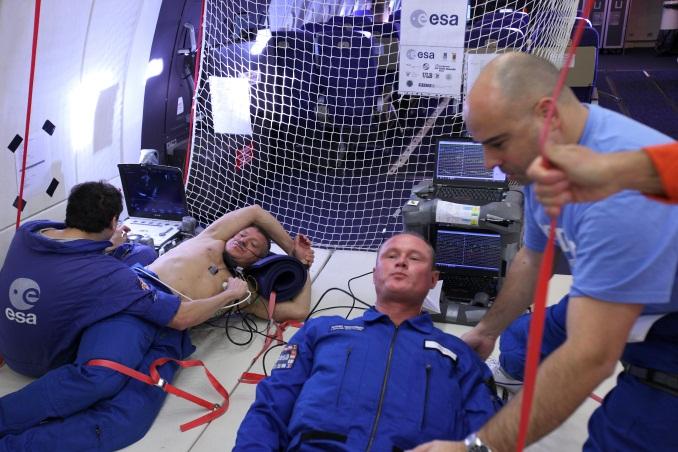 The aim of this project is the study of three-dimensional Ballistocardiography
during long-duration spaceflights. Ballistocardiography (BCG) is a non-invasive technique for assessing the
cardiac function from the body accelerations consecutive to the mechanical
action of the heart (contraction, ejection of blood, etc...). Space is the only place
where Ballistocardiograms can be recorded (unaltered) in 3-Dimensions.
The proof of concept is currently evaluated in transient microgravity obtained in ESA parabolic flights campaigns. Since 2011 we have been testing the Pneumocard-Ballisto system developed by the MKS company. The subjects alternate between three different protocols: a traditional Echocardiography cardiac function evaluation; a free-floating experiment during which 3D-BCG, ECG, Impedance-cardiography and respiration signals are recorded; a full rotation of the subject facing a stereo acquisition setup for the determination of its centre of mass.
The study is sponsored by
the European Space Agency,
the National Space Biomedical Research Institute and the Belgian Science Policy.
The aim of this project is the study of three-dimensional Ballistocardiography
during long-duration spaceflights. Ballistocardiography (BCG) is a non-invasive technique for assessing the
cardiac function from the body accelerations consecutive to the mechanical
action of the heart (contraction, ejection of blood, etc...). Space is the only place
where Ballistocardiograms can be recorded (unaltered) in 3-Dimensions.
The proof of concept is currently evaluated in transient microgravity obtained in ESA parabolic flights campaigns. Since 2011 we have been testing the Pneumocard-Ballisto system developed by the MKS company. The subjects alternate between three different protocols: a traditional Echocardiography cardiac function evaluation; a free-floating experiment during which 3D-BCG, ECG, Impedance-cardiography and respiration signals are recorded; a full rotation of the subject facing a stereo acquisition setup for the determination of its centre of mass.
The study is sponsored by
the European Space Agency,
the National Space Biomedical Research Institute and the Belgian Science Policy.
List of publications

|

|

|
SPIN

This project aims to study the deconditioning of the astronauts' cardiovascular and vestibular system as a consequence of long-duration spaceflights. In a second step, countermeasures against orthostatic intolerance upon return into a gravitational environment are assessed.
Our team is responsible for the analysis of the cardiovascular system
during a standardized tilt-test procedure including imposed and controlled breathing protocols.
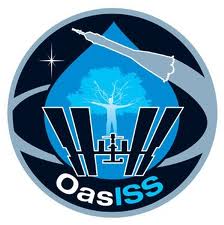 The belgian astronaut Frank De Winne was one of the test subjects
during his more than 6-months oasiss mission beginning end may 2009.
The belgian astronaut Frank De Winne was one of the test subjects
during his more than 6-months oasiss mission beginning end may 2009.
The study is performed in collaboration with the University of Antwerp (Prof. Wuyts), the European Space Agency and the Belgian Science Policy.
more...
List of publications

|

|

|
Central Autonomic Network
 A thorough review of brain imagery literature shows
there are common structures involved in emotion regulation,
cognitive processing and autonomic activation regulation.
These are part of what has alternatively been termed the
Central Autonomic Network (Benarroch, 1993),
the Anterior Executive Region (Devinsky, Morrell et Vogt, 1995)
and the Emotion Circuit (Damasion, 1998).
A thorough review of brain imagery literature shows
there are common structures involved in emotion regulation,
cognitive processing and autonomic activation regulation.
These are part of what has alternatively been termed the
Central Autonomic Network (Benarroch, 1993),
the Anterior Executive Region (Devinsky, Morrell et Vogt, 1995)
and the Emotion Circuit (Damasion, 1998).
In this project, we aimed at disentangling activation due to emotion induction, cognitive workload and "pure" autonomic arousal due to a cold pressor test.
ASMO
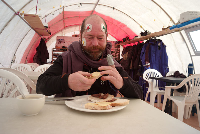 In this broad project, we investigated sleep, circadian rhythms and
physical activity during two Antarctic summer expeditions, the
construction expeditions of the new Belgian Antarctic Princess Elisabeth station.
This was the first experiment ever with polysomnographic recordings in such a
large sample (N=21) in Antarctica. Among the most interesting results was the
characterization of an inverted pattern of sleep architecture and a dissociation
of the cortisol and melatonin rhythms.
In this broad project, we investigated sleep, circadian rhythms and
physical activity during two Antarctic summer expeditions, the
construction expeditions of the new Belgian Antarctic Princess Elisabeth station.
This was the first experiment ever with polysomnographic recordings in such a
large sample (N=21) in Antarctica. Among the most interesting results was the
characterization of an inverted pattern of sleep architecture and a dissociation
of the cortisol and melatonin rhythms.
Follow-up: Neuropole project.
The study is sponsored by the Belgian Defense, the Belgian Science Policy.

|

|
Parabolic flights
The rapid adaptation of the cardiovascular system to acute gravity changes was studied during the 29th ESA Parabolic flight campaign. Short periods (~20 s.) of microgravity are induced onboard the A-300 Zero-g airplane operated by NOVESPACE via a parabolic flight profile. Pulse transit time, systolic time intervals and stroke volume were analyzed during the highly non-stationary conditions induced between the gravity transitions.
Odissea mission to the International Space Station (2002)
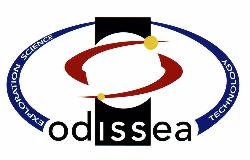
During the ISS 5S (Soyuz TMA-1) Belgian "Odissea" Mission, Frank De Winne participated to the CARDIOCOG experiment. The Cardiocog-Respi experiment aimed at the characterization of postflight autonomic re-adaptation to normal gravity with the use of imposed and controlled breathing protocols.
The Cardiocog-Text section of the protocol was on the assessment of cognitive performance and autonomic adaptation during spaceflight. This was the first objective measure of altered executive functions during spaceflight.
Cognitive performance assessment (military students pilots, jet fighter pilots)
Changes in cognitive performance associated with stressful conditions or extreme environments are linked with changes in autonomic activity, namely a decreased reactivity for challenge. Furthermore, including emotionally and specifically relevant material to the cognitive testing was shown to increase the sensitivity to discrete changes in mental status.
Predictive performance assessment (student pilots, athlete students and elite soldiers)
Investigating a broad range of psychological tests and physiological variables prior to critical performance to identify precocious markers of performance deterioration.
Top athletes real-time monitoring
Autonomic reactivity is a potential precocious marker of overreaching/overtraining.
SAHC/MEDES
List of publications
